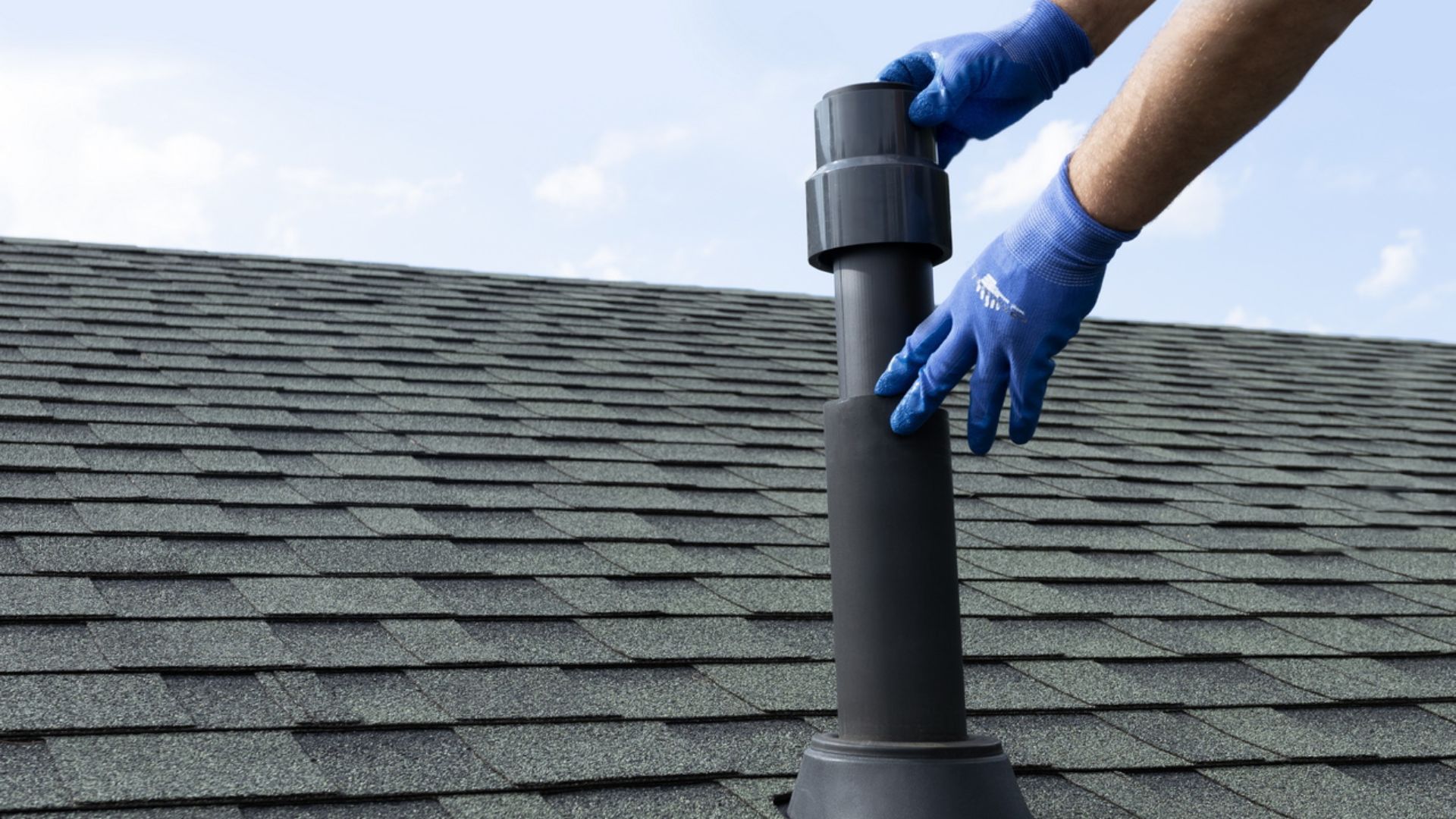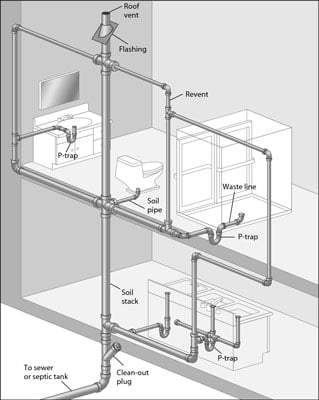Key Advantages for Correct Ventilation in Plumbing Systems
Key Advantages for Correct Ventilation in Plumbing Systems
Blog Article
They are making a few good points related to Essential Plumbing Vent Pipes: Understanding Their Role in general in the article down the page.

Appropriate air flow in pipes systems is often ignored, yet it is vital for preserving the functionality and security of your home's plumbing. Air flow assists manage air pressure, stop the buildup of unsafe gases, and guarantee the reliable elimination of waste. In this overview, we will explore the importance of proper pipes ventilation, how it functions, and the benefits it offers your pipes system.
Exactly How Air Flow Works in Pipes Solutions
Air Pressure Guideline
Proper air flow maintains well balanced air pressure within the pipes system. When water moves through pipelines, it displaces air. Without sufficient air flow, this variation can develop adverse pressure, resulting in slow down drains pipes or siphoning of water from traps, which can cause unpleasant odors to permeate into the home.
Protecting Against Sewage System Gas Build-up
Among the most important features of pipes vents is to avoid sewage system gases, such as methane and hydrogen sulfide, from building up within the home. These gases can position severe health and wellness dangers and are extremely flammable. Vent pipes permit these gases to run away securely outside.
Assisting in Waste Elimination
Air flow assists in the reliable elimination of wastewater by avoiding airlocks in the drainage system. When air can move easily via the vents, it enables water and waste to flow efficiently via the pipes, minimizing the danger of obstructions and back-ups.
Benefits of Proper Air Flow
Enhanced System Performance
Properly ventilated plumbing systems run a lot more efficiently, with fewer obstructions, faster draining, and less stress on the pipelines. This efficiency prolongs the life expectancy of the pipes system.
Improved Air Quality
By avoiding drain gases from entering your home, correct air flow adds to far better indoor air quality, making your living environment healthier and a lot more comfortable.
Protecting Against Water Damage
Ample ventilation aids protect against water from being siphoned out of traps, which can bring about sewer gases going into the home and triggering water damages in time.
Steps to Ensure Appropriate Air Flow
Consulting Plumbing Codes
Always seek advice from neighborhood plumbing codes when designing or changing your plumbing system. These codes offer the essential standards for proper venting and ensure your system fulfills safety and security standards.
Regular Evaluation and Maintenance
Normal assessments can aid recognize prospective air flow problems prior to they become major problems. Maintenance jobs, such as cleansing air vent pipelines and checking for blockages, are vital for keeping the system in good working order.
Specialist Installment
For brand-new installations or major adjustments, it's a good idea to hire a specialist plumbing professional. They have the experience to make sure the ventilation system is appropriately created and installed according to code.
Comprehending Ventilation in Plumbing
Ventilation in pipes describes the network of pipes that enable air to stream via the water drainage system. These vents serve multiple objectives, including controling atmospheric pressure within the pipelines, preventing sewer gases from entering the home, and aiding in the smooth flow of wastewater.
Kinds Of Plumbing Vents
Key Stack Vent
The main pile vent, likewise known as the vent stack, is the primary vent in a plumbing system. It expands from the major drain align via the roof, allowing gases to escape and fresh air to enter the system.
Branch Vent
Branch vents connect to the major pile air vent and offer specific components, such as sinks, toilets, and showers. These vents guarantee that each component has appropriate air flow to function correctly.
Air Admission Shutoff (AAV).
An Air Admission Valve (AAV) is a one-way valve that enables air to enter the pipes system without the requirement for a traditional air vent pipeline extending via the roofing system. AAVs are generally made use of in improvements or locations where mounting a typical vent is impractical.
Signs of Poor Ventilation in Plumbing.
Slow Draining Fixtures.
If your sinks, tubs, or bathrooms are draining pipes gradually, maybe an indication of inadequate air flow. Insufficient air flow can develop a vacuum effect, making it difficult for water to drain pipes appropriately.
Gurgling Seems.
Gurgling sounds originating from drains are frequently an outcome of air being sucked via water traps due to adverse stress in the pipelines. This is a clear sign of insufficient air flow.
Unpleasant Smells.
Drain smells inside your home are a red flag that your plumbing system is not effectively ventilated. This might suggest that sewage system gases are not being sufficiently aired vent outside, resulting in possibly dangerous problems.
Usual Ventilation Errors.
Inadequate Vent Sizing.
Making use of small vent pipelines can bring about inadequate air circulation and stress inequalities in the system. It's necessary to use vents that meet the details needs of your plumbing system.
Improper Vent Placement.
Positioning vents as well far from the components they serve can reduce their performance. Appropriate placement makes certain that air can flow openly and effectively through the system.
Disregarding Code Requirements.
Building ordinance offer specific guidelines for plumbing ventilation. Ignoring these codes can lead to a system that falls short to work correctly and might cause expensive fixings or health hazards.
Conclusion.
Appropriate air flow is an important part of any kind of pipes system, making certain that it operates successfully and securely. By recognizing the relevance of air flow, identifying the indications of bad ventilation, and taking steps to keep your system, you can protect against expensive problems and protect your home's air top quality.
4 Things You Should Know About Your Plumbing Vents
What Plumbing Vents Are
Also called a vent stack, a plumbing vent is a vertical pipe attached to your drain line that runs through your roof. The plumbing vent pipe, or plumbing air vent, removes gas and odors from your plumbing system and allows fresh air to enter the pipes, helping the water to flow out of the drain pipes.
What Plumbing Vents Do
Plumbing vents have two basic functions. One of which is to allow unpleasant smelling wastewater and sewer gasses to escape your plumbing system instead of entering your home. Plumbing vent pipes are typically located on roofs, away from windows, to ensure the fumes exit the home completely.
The other function of the plumbing vent is to move fresh air into your plumbing system. This helps move water through every plumbing fixture in your house, like toilets and sink drains. Think of the way in which you need to let a little air into the bottle as you pour soda in order to make the drink flow smoothly.
Different Types of Plumbing Vents
True vent: This is the most common vent option. In simplest terms, a true vent is a vertical pipe attached to your drain line that exits through the roof. They often function as the main vent that other fixtures can connect to. Re-vent pipe or auxiliary vent: Attached to the drain line near specific plumbing fixtures, re-vent pipes run up and over to connect to the main vent. Common vent: Two plumbing fixtures installed on opposite sides of a wall are typically tied into the vent stack using something known as a sanitary cross. Wet vent: This venting option operates as a drain pipe and a vent at the same time. Wet vent drainage systems drain water from one fixture while venting the air from another. Although they’ve been used for over 100 years, wet vent systems have only recently been added to the plumbing code in many areas. If you’re planning on installing one in a bathroom remodel, make sure you check your local code prior to construction. Loop vent: For free-standing fixtures like kitchen island sinks, loop vents are ideal. These vent pipes run under the floor, rise from the P-trap, and create a loop inside the cabinet sink. Air admittance valve: An AAV is a one-way mechanical valve typically installed at the site of the plumbing fixture. AAVs allow venting to occur without having to tie into a larger venting system. They’re ideal for venting fixtures where you aren’t able to easily connect to an existing vent system. Common Plumbing Vent Issues
Although vent pipes typically don’t have water flowing through them, they’re still subject to many typical plumbing issues. For example, clogs are one of the most common problems associated with sewer vent pipes. If your vent pipe gets clogged, all of your plumbing fixtures tied into the vent stack will be affected.
A sink with a slow drain that bubbles and gurgles or a strong sewage smell around your toilet are both indicators that your toilet vent pipe is clogged. Because most vent pipes exit through the roof, old leaves, twigs or even a bird’s nest could be clogging the pipe.
Clogs in your vent pipe system cause a buildup of negative pressure, meaning that water won’t be able to flow out of your home very well. It’s similar to putting your finger over the opening of a straw to trap water inside. When you remove your finger, the water is able to flow out of the straw.
If you suspect you have any blockage in your vent, make sure you have a professional come examine the situation. Left unchecked, a blocked air vent can lead to other costly repairs, like leaks and sediment buildup.
Under Pressure
Pipe vents are essential aspects of a home’s plumbing system. Owning a home means learning about all sorts of things you never put much thought into before. But by understanding as much as you can about the important systems of your home, you can keep those budgets intact and those anxiety levels low.
https://www.homeserve.com/en-us/blog/home-improvement/plumbing-vents/

As a keen reader on , I thought sharing that excerpt was beneficial. Loved our review? Please quickly share it. Help others find it. Bless you for your time. Return soon.
Click Here Report this page